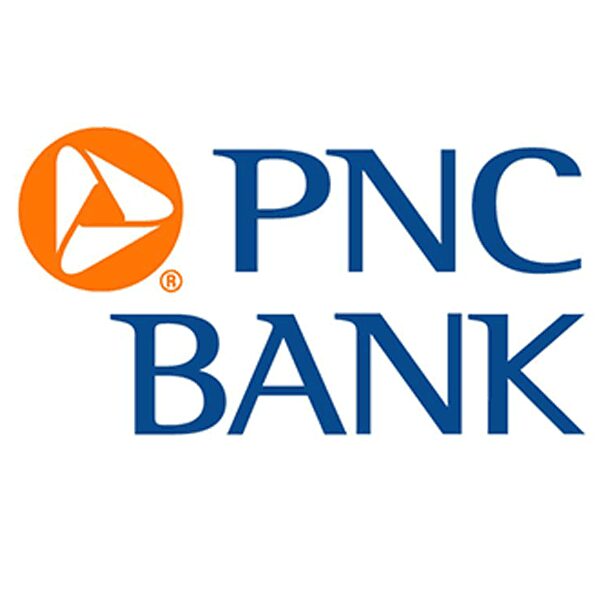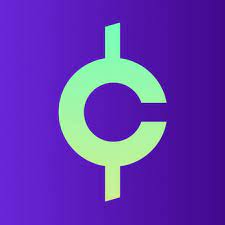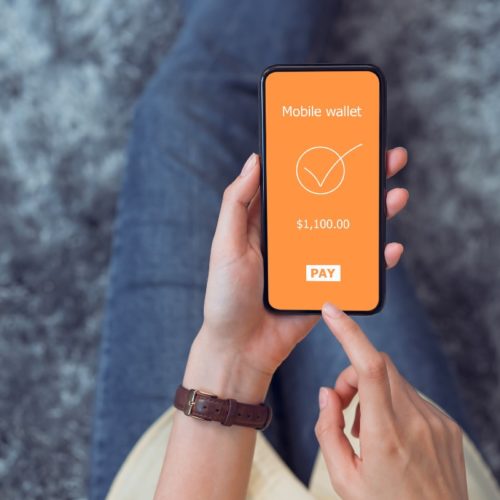Explore the best bank accounts for kids to help your children develop good financial habits early. Take my word; it’s never too early to start thinking about your kid’s financial future.
In fact, research suggests that young people have the developmental ability to understand saving by the time they’re 5 or 6. This means that good (or bad) habits can start early.
One of the best ways to get your kids on the right trajectory is to set them up with their own bank accounts. Whether it’s a checking or savings account or even a prepaid debit card, early access to banking can help kids get the hang of budgeting.
Rather than simply piling up loose change in a piggy bank, a kids’ bank account exposes young people early to financial principles that will serve them into adulthood.
11 Best Bank Accounts for Kids
From big-name traditional banks to online options and kid-only platforms, keep reading for the best bank accounts for kids.
- 🏆 Chase Bank: Best Overall
- Axos Bank: Best Online Bank
- Alliant Credit Union: Best Credit Union
- Capital One: Best Checking Account
- Greenlight: Best Prepaid Debit Card
- Step: Best for Helping Build Credit
- GoHenry: Best For Young Kids
- PNC Bank: Best Savings Account
- Pen Air Credit Union: Best Educational Tools
- Copper: Best for Teens
- Jassby: Best for Financial Literacy
1. Chase Bank: Best Overall 
- Account name: First Banking
- Minimum opening deposit: $0
- Monthly fee: $0
Chase First Banking is one of the best kids’ banking platforms around. First Banking is available exclusively to current Chase customers and sets your child up with a hybrid bank account to spend, save, and earn.
There are no monthly fees, and kids can get cash from Chase’s 16,000 ATMs for free. Plus, parents can set custom spending and withdrawal limits and get real-time transaction alerts through the Chase mobile app.
If you aren’t a current Chase customer but like the sound of Chase First Banking, Chase offers some of the best sign-up bonuses in the industry.
Learn More:
2. Axos Bank: Best Online Bank 
- Account name: Axos First Checking
- Minimum opening deposit: $0
- Monthly fee: $0
If you want to get your kid involved with online banking, Axos has arguably the best online-only teen account available.
Axos First Checking is available to kids aged 13 to 17 with a 0.10% APY on deposits. There are no monthly maintenance or overdraft fees, and ATM fees are reimbursed up to $12 per month.
The account also has built-in daily transaction limits. Teens can withdraw up to $100 per day and won’t be able to spend more than $500. First Checking is a joint account, and parents can monitor spending through real-time alerts in the app.
Learn More:
3. Alliant Credit Union: Best Credit Union 
- Account name: Kids Savings Account
- Minimum opening deposit: $100 to earn higher interest rate
- Monthly fee: $0
Alliant Credit Union’s Kids Savings Account is one of the highest-earning accounts for young people that you’re likely to find. If your child keeps at least $100 in the account, they can earn a 3.10% APY on deposits—which is more than most adult options pay.
The account is available to current Alliant members and doesn’t have monthly fees or minimum deposit requirements. You can easily transfer funds from your own Alliant account for allowance or birthday gifts, and as a joint owner, you’ll have full account access.
Kids Savings is only available to children 12 and under. But if you’re looking for an option for your teenager, Alliant also offers a Teen Checking account.
Teen Checking is an interest-bearing account with a 0.25% APY. There’s no monthly fee or minimum balance requirement, and teens get access to 80,000 fee-free ATMs plus $20 per month in fee rebates.
Learn More:
4. Capital One: Best Checking Account 
- Account name: MONEY Teen Checking
- Minimum opening deposit: $0
- Monthly fee: $0
Capital One is a hybrid bank, so teens can get a sense of online and traditional banking. With the MONEY Teen Checking account, kids earn 0.10% on any balance without worrying about monthly fees or balance minimums.
The account is designed with teens in mind, but it’s available for anyone eight or older. Parents get a separate log-in to monitor spending and look for teachable moments, and the account comes with free access to a network of more than 70,000 ATMs.
Plus, you don’t need a Capital One account for your teen to have an account. Parents can transfer funds to a MONEY account for free from any account.
Capital One also offers Kids Savings, which pays a 2.5% APY on all balances and has no monthly fees. The account automatically converts into a 360 Savings account when your child turns 18 and easily links to your own accounts until then.
Learn More:
5. Greenlight: Best Prepaid Debit Card 
- Account name: Greenlight Core
- Minimum opening deposit: $10
- Monthly fee: $4.99+
Greenlight is one of the best-known kids-only banking platforms, offering debit cards for kids through its FDIC-insured partner bank, Community Federal Savings Bank.
It is app-based and provides modern tools to help you raise finance-savvy kids. In the app, kids can check off chores to earn payouts, set savings goals, and even try fractional share investing.
With Greenlight, you can manage debit cards for up to five kids within the same app. Plans for the whole family start at $4.99 per month, and you’ll get the first month free when you sign up.
Learn More:
6. Step: Best for Helping Build Credit 
- Account name: Step
- Minimum opening deposit: $0
- Monthly fee: $0
Step helps parents help kids learn good financial habits. The app and card are free, and there’s no way for kids to overdraft because they can only spend what is in their account. What sets Step apart from the other best bank accounts for kids is they also help kids build credit.
Kids have a ‘Visa’ card that they use for spending. Step reports the amounts to the credit bureaus and automatically pays the balance off with the funds in the teen’s account.
The account has no monthly fees, is FDIC-insured, and no minimum balance requirements. However, Step is not a bank; it is a banking app that uses bank-level security and is backed by Evolve Bank & Trust.
To make it even better, Step pays 5% savings rewards for accounts that have at least $500 in direct deposit monthly.
Like Greenlight, teens can also begin investing, taking advantage of the power of compounding. Teens have the option to invest in stocks or cryptocurrency.
Learn More:
7. GoHenry: Best For Young Kids 
- Account name: GoHenry Kids’ Debit Card
- Minimum opening deposit: $0
- Monthly fee: $4.99
GoHenry is a kid-centric option for children between the ages of 6 and 18. The app is all about financial education and aims to provide helpful resources combined with experiential learning.
Kids can choose their own personalized debit card, which they can use wherever Mastercard is accepted.
Parents can set an automated allowance or issue funds when the chores get done. You can also help your kids build toward their savings goals by making gift deposits or setting your own APY.
GoHenry is backed by Community Federal Savings Bank, so deposits up to $250,000 are protected by FDIC insurance.
Learn More:
8. PNC Bank: Best Savings Account 
- Account name: ‘S’ is for Savings
- Minimum opening deposit: $0
- Monthly fee: $5 but waiveable
If you’re looking for the best kids’ savings account, check out PNC’s ‘S’ is for Savings.
The account is built around an interactive online experience using Sesame Street characters to teach finance fundamentals. There are activities that parents and kids can do together, so you can help your child develop good money habits.
Interest starts accruing with as little as $1 deposited, and you can easily set up recurring transfers from your own PNC account. ‘S’ is for Savings also comes with a built-in goal-setting tool, so your kids can learn to work toward a target over time.
Unfortunately, there’s a $5 monthly fee, but you can avoid it if you make recurring transfers of at least $25 into the account per month or keep a monthly balance of at least $300
Learn More:
9. Pen Air Credit Union: Best Educational Tools 
- Account name: Level Up Youth Accounts
- Minimum opening deposit: $0 – $25
- Monthly fee: $0
Pen Air Federal Credit Union helps youth save and watch their money grow with their Level Up Youth accounts. It’s more than a bank account; it’s an educational tool to help kids learn to manage their money and to let it grow.
Pen Air has two accounts for kids: Level Up Savings and Level Up Spending. The savings account is for kids from birth to 18, and the spending account is for kids 8 – 18. Kids need $25 to open a savings account, but there’s no minimum deposit required for the spending account.
As you probably guessed, the savings account accrues interest, and the spending doesn’t. But the spending account includes digital banking, money management tools, and a debit card with parental controls.
Learn More:
10. Copper: Best for Teens 
- Account name: Copper
- Minimum opening deposit: $0
- Monthly fee: $4.95 – $7.95/month
Copper is a modern, online-only banking option built specifically for teens. The accounts are protected by FDIC insurance through its partnership with Evolve Bank & Trust.
Copper is a newer platform, but it boasts more than 1,200,000 users. You can open an account for your teen online in just a few minutes and put an allowance on autopilot with recurring transfers from your external account.
Copper accounts come with a debit card that teens can use wherever Mastercard is accepted. Copper also comes with a financial literacy quiz to help teens understand what they know so far and where they need to improve. Kids can earn 5% on any money saved and have access to 55,000 ATMs.
Learn More:
11. Jassby: Best for Financial Literacy 
- Account name: Jassby Debit Card
- Minimum opening deposit: $0
- Monthly fee: $5.95
Jassby is an online platform that aims to help families grow their financial literacy together.
A Jassby debit card has no monthly or transaction fees, and parents can quickly fund a card online and set up custom alerts and spending limits.
The coolest feature that Jassby offers is its Financial Literacy (FL) Score. Each kid using the platform gets a score, which grows over time when they make good financial decisions and use Jassby’s tools.
As a bonus, those good decisions can hook young people up with some exciting rewards. Just like a rewards credit card, kids earn points for using their Jassby card; the higher your FL Score, the more multipliers you’ll get.
Jassby is a completely free platform, so there’s no need to worry about monthly fees.
Learn More:
What Is a Kids’ Bank Account?
A kids’ bank account is a deposit account designed for people under 18.
Usually, these accounts are either:
- Custodial, where a parent or guardian owns the account on a child’s behalf; or
- Jointly held, where both parent and child have account ownership.
These bank accounts are more than just a place to store your kid’s money. Most come with useful educational tools, low fee schedules, and overdraft protection.
In general, kids’ accounts give young people a window into the adult banking world. They function similarly to adult accounts but aim to create an environment conducive to financial learning.
How to Open a Bank Account for Kids
To open a kids’ bank account is similar to what you do to open an account yourself. The only difference is some banks won’t allow you to open a kids’ account online, and you may have to go into the bank in person (if they have branches).
Otherwise, the process is the same:
- Complete an application with your child’s information and your own, since you must be the custodial account holder or a joint account holder
- Provide names, addresses, birthdates, and Social Security numbers for every account holder
- Link an external bank account if you don’t have an account where your child is opening the account
- Fund the bank account
- Use the bank account and its benefits
Tips for Choosing a Children’s Bank Account
When looking for the best bank account for kids, here are some tips to consider:
- Know the minimum deposit requirements
- Read the fine print to understand the monthly fees and how to waive them
- Look at the ATM network if it’s a spend account to ensure there are ATMs in the network
- Consider APYs, especially if your child is opening a savings account
- Look financial tools, education, or goal trackers
- Look for accounts with online or mobile banking capabilities
Methodology
To find the best bank account for kids, we evaluated the country’s top banks and what they offered. We looked for banks with the lowest fees, highest APYs, and the most convenient ATMs, and those that offered the most features, such as providing financial education.
FAQs
What kind of bank account should I open for my child?
It depends on their age and what your goals are for the account. If you want your child or teen to have a sense of independence, a debit card with parental controls is a smart way to ease into it. Learning to manage a checking account is a great exercise in budgeting and might be the most important aspect of personal finance to learn early.
Additionally, a savings account is the best way for young people to build up a balance over time. By earning interest, they learn how your money can grow when you invest it in the right places. Furthermore, when they achieve short- and long-term savings goals, it helps them build positive financial habits.
At the end of the day, any exposure to banking at a young age is positive. No matter what type of account you choose, you give your kids a head start on life.
Are kids’ accounts FDIC-Insured?
Yes, all of the accounts covered in this post are insured by the FDIC. Rather than relying on a money box or a cute piggy bank with a rubber stopper for security, a bank account helps teach kids about storing money in a secure location.
Always ensure that the FDIC backs it if you’re considering any account, whether for yourself or a child.
At what age should a kid get a bank account?
There’s no surefire answer here. Part of this decision depends on your specific family. But, in general, the earlier you can expose kids to personal finance, the better.
This doesn’t mean that pre-teens should be stressing about money. However, learning to budget, save, and spend wisely are all easy things to encourage. When you open a bank account for your child, you’re giving them the agency to learn about money by using it.
If you think your kid might be a little young, start slow. A savings account that they can watch grow over time sets a good message, and once you think they’re ready for the responsibility of a debit card, you can set them up with a checking account.
Think it over, look at the options, and go with the strategy that’s best for you and your family. Just don’t wait too long.
Should You Open a Bank Account for Your Child?
With so much information out there, it’s never been easier for kids to learn about banking. Between accounts designed specifically for children and modern platforms geared toward teens, the banking world has made space for young people to get involved.
A kids’ bank account accomplishes a few things. Of course, it gives your kids a sense of freedom to spend their own money. It also teaches them to manage money even though they might not even realize it.
If you want your kids to get ahead and have the best chance at managing money well as adults, a kids’ bank account is a great gift to push them toward it.
The only question left to answer is: which of the best bank accounts for kids are you going to get? Here’s to making smart financial decisions on behalf of your kids!





No comments yet. Add your own